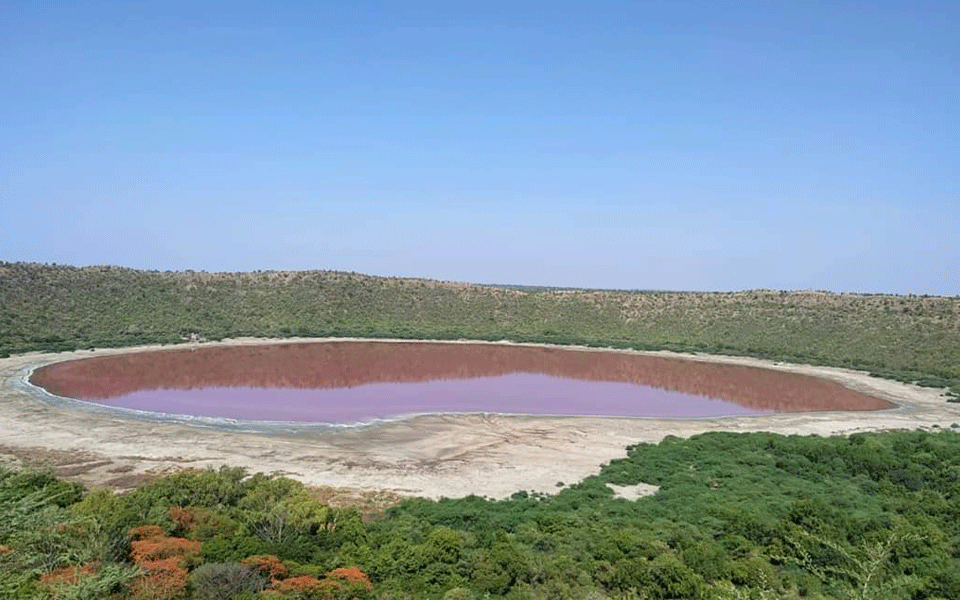Aurangabad: The colour of water in Maharashtra's Lonar lake, formed after a meteorite hit the Earth some 50,000 years ago, has changed to pink with experts attributing it to the salinity and presence of algae in the water body.
Located around 500 km from Mumbai, the Lonar lake in Buldhana district is a popular tourist hub and also attracts scientists from all over the world.
Of late, the change in colour of water of the lake, having a mean diameter of 1.2 km, has not only surprised locals, but also nature enthusiasts and scientists.
Experts say this is not the first time that the colour change has happened, but this time it is more glaring.
The lake, which is a notified national geo-heritage monument, has saline water with pH of 10.5, Gajanan Kharat, member of the Lonar lake conservation and development committee, told PTI.
"There are algae in the water body. The salinity and algae can be responsible for this change," he said.
"There is no oxygen below one meter of the lake's water surface. There is an example of a lake in Iran, where water becomes reddish due to increase in salinity," he noted.
Kharat said the level of water in the Lonar lake is currently low as compared to the few past years and there is no rain to pour fresh water in it.
"The low level of water may lead to increased salinity and change in the behaviour of algae because of atmospheric changes...this may be the reason for colour change. This is not the first time that the colour of water has changed," he said.
Dr Madan Suryavanshi, head of the geography department of Aurangabad's Dr Babasaheb Ambedkar Marathwada University, said looking at the scale of this colour change, "this cant be a human intervention".
"In case of a natural phenomenon, there are fungi which generally give a greenish colour to water most of the times. This (the current colour change) seems to be a biological change in the Lonar crater," he said.
During the lockdown phase, there may not have been any disturbance to water which led to this change, he said.
"Season-wise changes occur in water and this might be case with the Lonar lake. We can examine the change if we go there in a week...then we can say more about the change," he said.
Let the Truth be known. If you read VB and like VB, please be a VB Supporter and Help us deliver the Truth to one and all.
Gorakhpur (PTI): A hospital employee was booked for allegedly sexually assaulting a woman in the pretext of an ultrasound test here in the district women's hospital, police said on Saturday.
According to the complaint, the woman, a resident of the Gulriha area, visited the district women's hospital on Thursday morning for an ultrasound test.
She was directed to a room, where Abhimanyu Gupta was conducting ultrasounds. When her turn came, the accused allegedly stared at her and told her to remove all her clothes, claiming it was necessary for the test and that a massage would also be required, she said.
ALSO READ: UP: Girl kidnapped, raped multiple times over 25 days; accused held
The woman alleged that once she complied, the accused began making obscene advances and tried to force himself on her. When she screamed, he allegedly gagged her, abused her and threatened to kill her before pushing her out of the room.
She said her complaints within the hospital went unheard, forcing her to approach the police.
Taking cognisance of the complaint, the hospital administration constituted a three-member inquiry committee, officials said.
Senior consultant (paediatrics) Dr Jay Kumar said, "The woman has levelled serious allegations against a staff member. Senior officials have been informed, and a departmental inquiry is underway. Strict action will be taken if the charges are proved."
Kotwali Station House Officer Chatrapal Singh said a case has been registered, and efforts are on to nab the accused.





